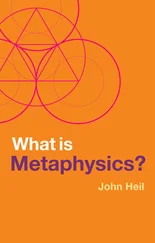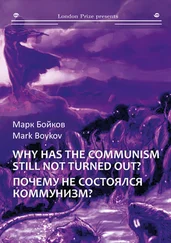Of course, history is still researched, written, read by enough individuals that the discipline as such survives. The sum of historical knowledge has always been held by a small number of educated people at any given time, and this has not changed. But our world is geared at keeping up with a furiously paced present, with no time for the complex past; and the fact that a very large number of literate people with unprecedented access to advanced education and scanned sources has no sense of what the world was like only yesterday points to the possibility of eventually arriving at a state of collective amnesia. We risk remaining stuck within a culture where everyone ignores the sundry causal connections that make the present what it is, happy to focus on today’s increasing complexity—as if a blank slate favored creativity and innovation.
There is a way out: by integrating the teaching of history within the curricula of all subjects, using whatever digital or other means we have to redirect attention to slow reading and old sources. Otherwise we will be condemned to live without perspective, robbed of the wisdom and experience with which to build for the future, confined by the arrogance of our present-ism to repeating history without noticing it.
DO WE UNDERSTAND THE DYNAMICS OF OUR EMERGING GLOBAL CULTURE?
KIRSTEN BOMBLIES
Assistant professor of organismic & evolutionary biology, Harvard University
Humanity is building a global superculture. We know it’s dynamic and exciting, but do we understand what we’re getting into? Like local cultures, this global one exists in a parallel world of information only loosely tied to physical substrates or individual minds. It has a life of its own, and we don’t fully understand its evolutionary potential. As a result, we probably don’t adequately appreciate the possible hazards associated with it. What unanticipated emergent properties might a globalized culture have?
Luckily there are informative parallels between biological and cultural evolution. Cultural systems, like biological systems, change over time. Heritable units of culture—counterparts of genes in biology—are difficult to define, but we can observe information propagating and mutating: for example, as the packets that Richard Dawkins popularized as “memes.” Unlike genes, ideas (or memes) can be transmitted worldwide in an instant and potentially reach huge audiences, so the evolution of cultures can hurtle on at a rate far exceeding that of our biological evolution. The mutation and differential survival of ideas, however, is analogous to the mutation and differential survival of genetic variants, and thus our understanding of cultural evolution can be informed by biological concepts.
A central lesson from biological evolution is that those genetic variants that propagate best come to numerical domination. Though they often achieve this by benefiting their carriers, some variants are so good at replicating and propagating that they can increase even if they harm their carriers. Some ideas spread similarly. The mass propagation of a factually incorrect, divisive, or misleading idea is not uncommon. Is this a disease state or a beneficial and natural part of the dialog in a free society? A complication in answering this is that one person’s dangerous idea may be another’s revelation. Is there a recognizable distinction between a harmless or beneficial flow of ideas and a malignant state?
Despite complications in defining cultural disease, it’s clear that selfish ideas can propagate—we have seen it in our lifetime. I mean “selfish” here in an evolutionary sense: as something that’s good at increasing numerically without conferring any benefit to its host. Sociology and psychology can address the question of why some ideas spread and others don’t, but it seems inevitable that selfish replicants will at some time proliferate in virtually any evolving system. In every ecosystem, there are parasites; in almost every genome, there are selfish elements; in every society, there are cheats. Thus we should probably consider what detrimental properties might propagate in a global culture and how their troublesomeness scales with culture size and complexity. Is there, or could there be, a cultural immune system—for example, is the system sufficiently self-policing, with the infusion of counterviews from diverse people? We need to know whether something can go seriously or systematically wrong with a global culture, and how to recognize and fix it if it does. I hope we can ensure that its flaws are minor and that it becomes a generally positive force for humanity.
WE WORRY TOO MUCH ABOUT FICTIONAL VIOLENCE
JONATHAN GOTTSCHALL
Adjunct professor of English, Washington & Jefferson College; author, The Storytelling Animal: How Stories Make Us Human
In the wake of a mass shooting, we feel a desperate need to know “why?” so we can get to “how”—how can we keep this from happening again? When someone shoots up a school, a mall, or an office, people on the left usually blame lax gun laws and recommend making them stricter. On the right, people are apt to blame cultural factors—violent video games and films that have sickened the culture, glorifying wanton violence and desensitizing young people to its effects—and see loose gun regulation not as a cause of the massacres but as our best defense against them.
But this idea of blaming the media is an oldie and a baddy. First, speaking practically, where would we draw the line? If we managed to ban trigger-happy games like Doom , Call of Duty , and Halo , what would we do about violent films like Saving Private Ryan or equally gory classics like Homer’s Iliad ? Should we edit the killings out of Shakespeare’s plays?
Second, the evidence that violent media promotes violent behavior is pretty shaky. Violence is a great—perhaps the great—staple of the entertainment economy. As a society, we guzzle huge amounts of fake violence in television shows, novels, films, and video games. And yet a determined fifty-year search for real-world consequences of fictive violence hasn’t found conclusive evidence of a causal linkage. Some researchers argue that the more we consume violent media, the more likely we are to behave aggressively in the real world. Other researchers disagree, picking studies apart on methodological grounds and pointing out that many hundreds of millions of people watch violent television and play violent games without developing the slightest urge to kill. As scientists like Steven Pinker point out, we consume violent entertainment at a greater rate than we ever have before, yet we’ve never been at lower risk of a bloody demise. The more we’ve consumed, the more peaceable and law-abiding we’ve become.
Has the consumption of violence in the media actually helped reduce criminal violence? The notion isn’t as perverse as it may at first seem. Critics of media violence envision scenarios that have us vicariously reveling in wanton savagery. But the messages found in most video games are strongly prosocial. Adventure-style video games almost always insert players into scenarios wherein they play the role of a hero bravely confronting the forces of chaos and destruction. When you play a video game, you aren’t training to be a spree shooter; you are training to be the good guy who races to place himself between evil and its victims.
The same goes for traditional fiction formats—film, television, and novels. Virtually without exception, when the villain of a story kills, his violence is condemned. When the hero kills, he does so righteously. Fiction preaches that violence is acceptable only under defined circumstances—to protect the good and the weak from the bad and the strong. Some games, such as Grand Theft Auto, seem to glorify and reward bad behavior (although in a semi-satirical spirit), but those games are the notorious exceptions that prove the general rule. What Stephen King says of horror stories in his book Danse Macabre broadly applies to all forms of imaginary violence:
Читать дальше












